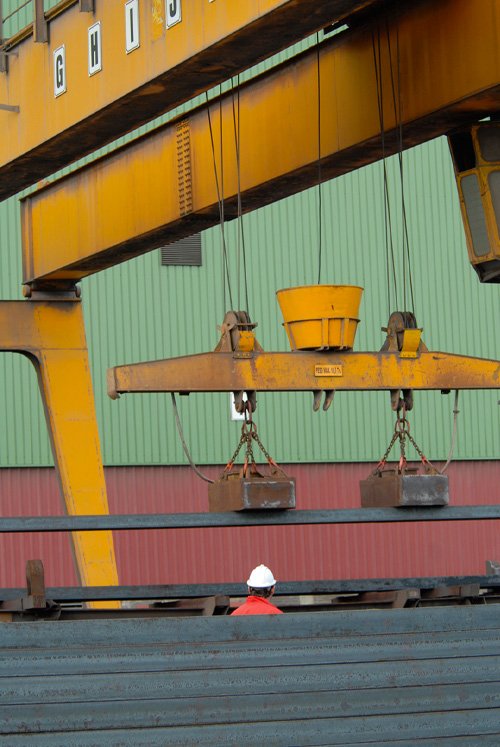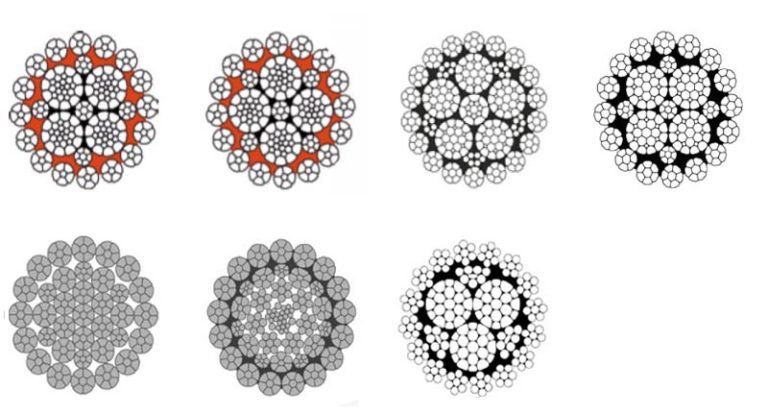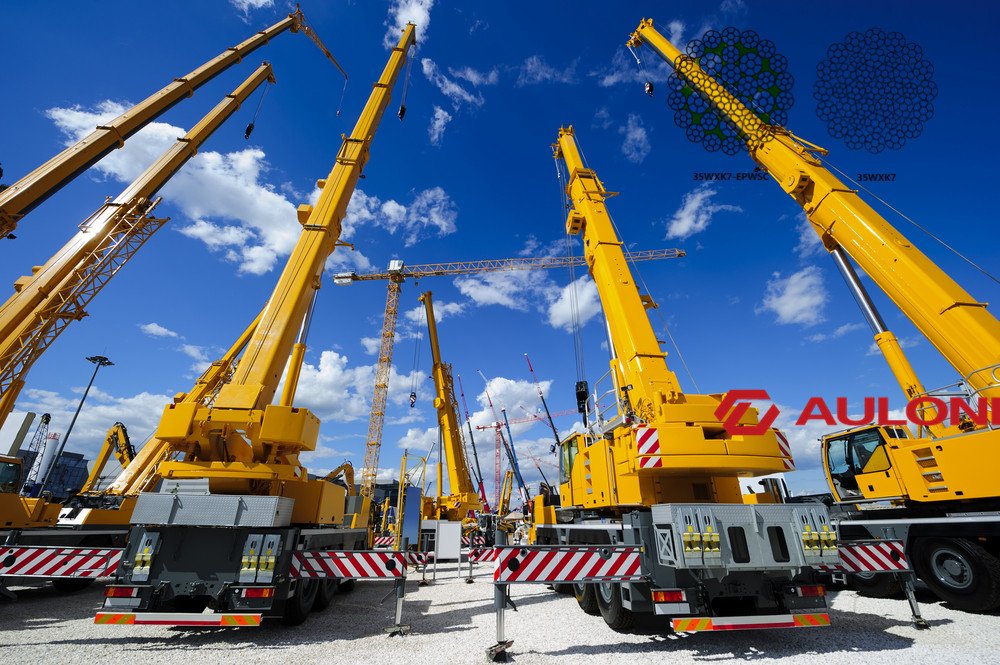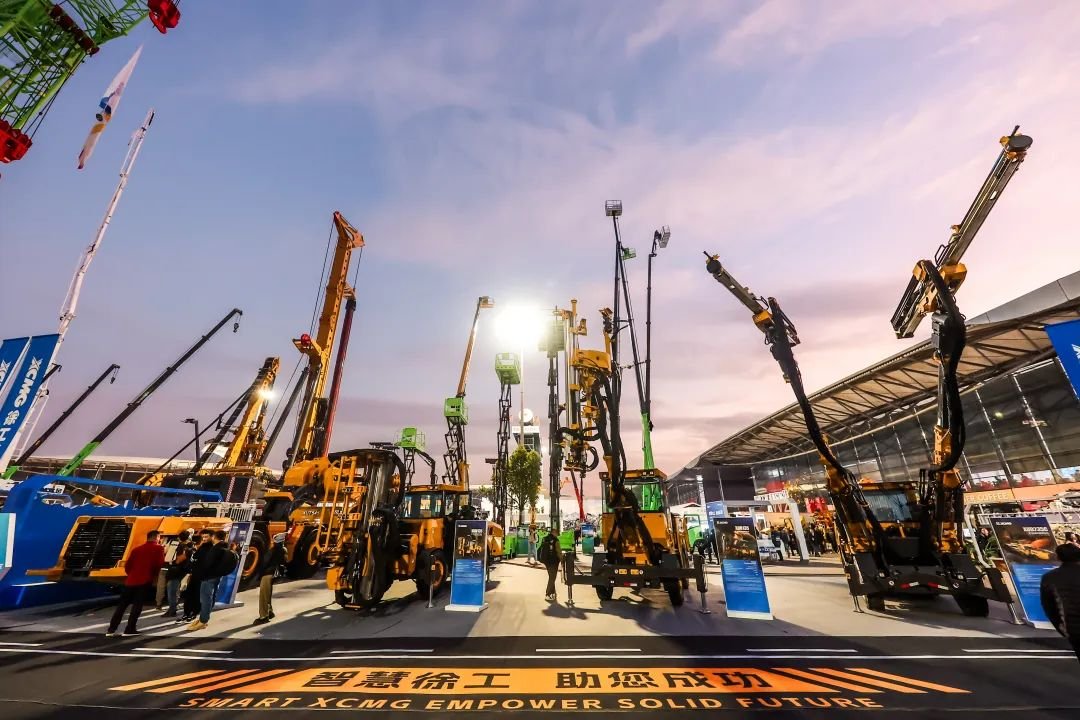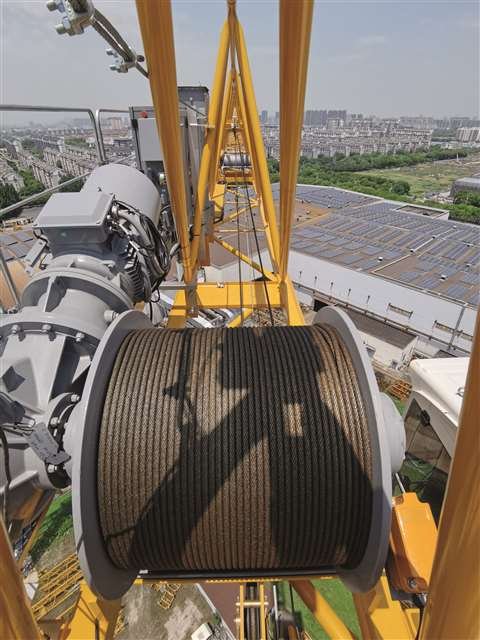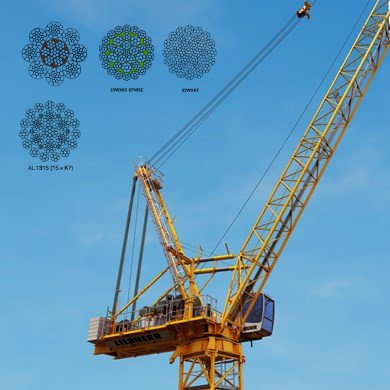Choosing the wrong anchor rope is a serious risk. Your boat could drift in the middle of the night. Using the best rope combination provides security and total peace of mind.
For most recreational boats, a three-strand nylon rope is the best overall choice for an anchor line. It provides excellent strength, superior shock absorption, and is affordable and easy to handle.
I once experienced a storm where my boat began to drag its anchor. It was a frightening night that taught me a valuable lesson. The right anchor setup is not a luxury, it’s essential safety equipment.
What Are the Main Types of Anchor Ropes to Choose From?
There are many rope types available on the market. This can be confusing for boat owners. Let’s look at the most common options to make your decision easier.
The three main types of anchor rope are Nylon, Polyester, and Polypropylene. Nylon is ideal for its shock absorption. Polyester has low stretch, and Polypropylene floats but is not as strong.
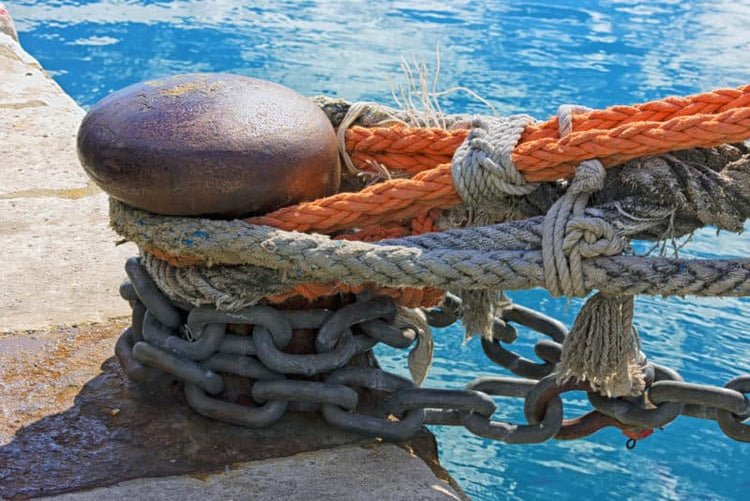
A Closer Look at Rope Materials
Choosing the material is the first and most important step. Each material has unique properties. These properties determine how it will perform as an anchor rode, which is the line connecting your anchor to the boat.
Nylon Rope: The Standard for Anchoring
Nylon is the most popular choice for a reason. Its main advantage is its elasticity. Nylon can stretch up to 30% of its length. This ability to stretch acts like a shock absorber. When wind or waves hit your boat, the rope stretches and absorbs the pressure. This reduces the sudden jerking load on your anchor and deck hardware. This prevents the anchor from being pulled out of the seabed.
There are two common constructions:
- Three-Strand: This is the classic twisted rope. It is very easy to splice, which is useful when connecting it to a chain. It has slightly more stretch and is generally the most affordable option.
- Double Braid: This rope has a braided core and a braided cover. It is stronger, smoother, and more resistant to abrasion. However, it is more expensive and more difficult to splice than three-strand rope.
At our factory, Aulone, we produce high-tensile strength nylon ropes that are perfect for anchor lines. They provide the security and durability boaters need.
Polyester Rope: Strong but Stiff
Polyester is another strong synthetic rope. It has excellent resistance to abrasion and UV light, even better than nylon. Its main difference is its low stretch. Polyester only stretches about 10-15%.
This lack of stretch makes it a poor choice for a primary anchor line. Without the shock-absorbing quality of nylon, every wave and gust of wind sends a jolt directly to your anchor. This increases the chance of the anchor breaking free. It is, however, an excellent choice for mooring lines or other applications where low stretch is needed.
Polypropylene Rope: A Niche Player
Polypropylene rope is lightweight and it floats on water. It is also quite inexpensive. However, it has significant disadvantages for anchoring. It is much weaker than nylon or polyester. It also degrades quickly when exposed to sunlight (poor UV resistance). Its floating nature can also be a problem, as it can be tangled in propellers. It is not recommended for primary anchor rodes but can be used for small dinghies or as a stern line in some situations.
Material Comparison Table
This table will help you compare the key features at a glance.
| Feature | Nylon Rope | Polyester Rope | Polypropylene Rope |
|---|---|---|---|
| Strength | Very High | Excellent | Moderate |
| Shock Absorption (Stretch) | Excellent | Poor | Poor |
| Abrasion Resistance | Good | Excellent | Fair |
| UV Resistance | Good | Excellent | Poor |
| Sinks/Floats | Sinks | Sinks | Floats |
| Best for Anchor Rode | Yes | No | No |
How Do I Choose the Right Diameter for My Anchor Rope?
Using a rope that is too thin is dangerous because it can snap. A rope that is too thick is heavy, difficult to handle, and unnecessarily expensive. Let’s find the correct size.
You should choose your anchor rope diameter based on your boat’s length. A common guideline is to use 1/8 inch of rope diameter for every 9 feet of boat length. Always confirm with the manufacturer’s charts.

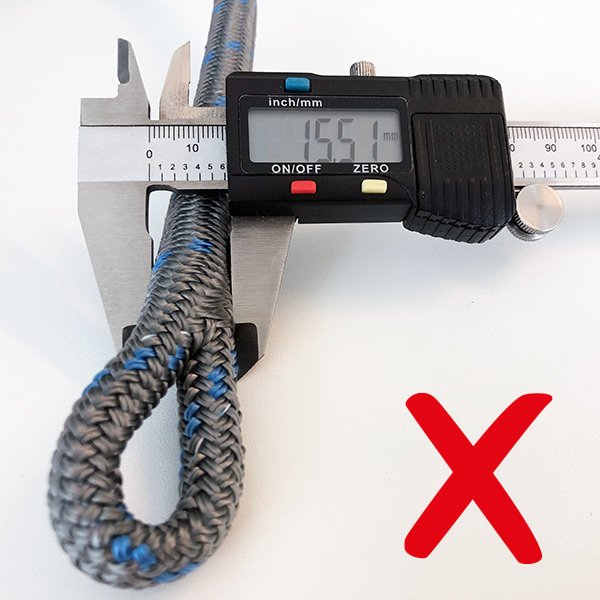
Sizing Your Rope Correctly
The size of your rope is just as important as the material. A rope’s strength comes from its diameter. You need a rope strong enough to hold your boat in the worst expected conditions.
A General Sizing Guide
Boat manufacturers and rope makers provide charts based on boat length and displacement (weight). Heavier boats need stronger, thicker ropes. Here is a simple guide for an average displacement monohull.
| Boat Length | Recommended Rope Diameter | Minimum Breaking Load (approx.) |
|---|---|---|
| Up to 20 ft (6m) | 3/8 inch (10mm) | 4,000 lbs (1,800 kg) |
| 21-30 ft (6.4-9m) | 1/2 inch (12mm) | 7,000 lbs (3,200 kg) |
| 31-40 ft (9.4-12m) | 5/8 inch (16mm) | 11,000 lbs (5,000 kg) |
| 41-50 ft (12.5-15m) | 3/4 inch (18-20mm) | 17,000 lbs (7,700 kg) |
Note: These are general guidelines. If you have a particularly heavy boat (like a trawler) or a multihull with high windage, consider going up one size.
Why Going One Size Up Can Be Smart
When it comes to safety gear, it is always better to be too strong than not strong enough. Choosing a rope diameter one size larger than the minimum recommendation has several benefits.
- Safety Margin: It provides a greater buffer for shock loads during a storm.
- Wear and Tear: As a rope ages and gets chafed, it loses strength. A thicker rope can lose some strength and still be safe.
- Handling: A thicker rope is much easier and more comfortable to handle with your hands.
The extra cost for a thicker rope is small compared to the security it brings.
Should I Use an All-Rope or a Rope-Chain Combination?
You might notice some boats use only rope, while others have a section of chain attached. There is a very good reason for this, and it makes a huge difference in performance.
A rope-chain combination is almost always superior to an all-rope rode. The chain’s weight improves anchor setting, and its toughness provides critical protection against abrasion on the seabed.
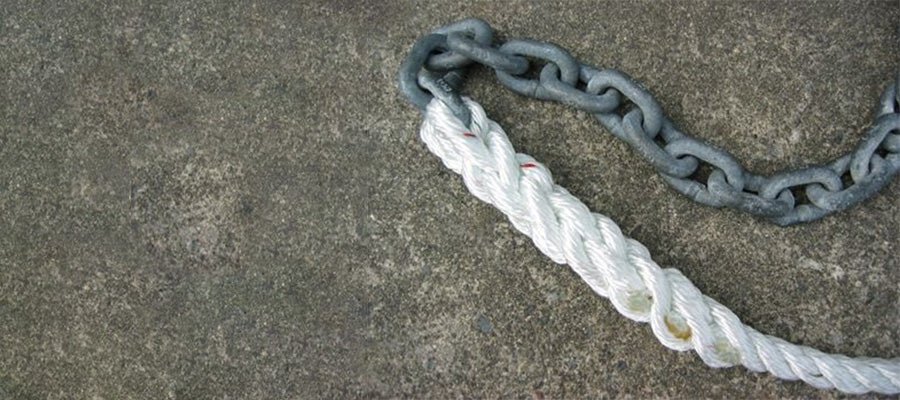
The Power of the Rope-Chain Combination
Combining nylon rope with a section of galvanized chain gives you the best of both worlds. You get the shock absorption of nylon and the strength and weight of chain.
Why Chain is Critical at the Anchor
The chain part of the rode provides three key benefits:
- Weight for Setting: The weight of the chain helps keep the pull on the anchor horizontal, along the seabed. This allows the anchor’s flukes to dig in and set properly. An all-rope rode is too light and can pull the anchor upward, causing it to drag.
- Abrasion Resistance: The seabed is not smooth. It is covered in rocks, shells, coral, and other debris. Rope that rubs against this will quickly chafe and fail. Chain is tough and can handle this abrasion easily, protecting the rope.
- The Catenary Effect: This is a key concept. When the rode is deployed, the heavy chain sags in the middle, forming a curve called a catenary. This sag acts as a secondary shock absorber. When a gust of wind hits, the energy first goes into lifting the heavy chain before it pulls on the anchor. This dramatically smooths out the loads.
How Much Chain Do I Need?
The amount of chain you need depends on your boat and anchoring style.
- For most coastal cruising: A length of chain equal to your boat’s length is a good starting point. For a 35-foot boat, about 30-40 feet of chain is excellent.
- For serious offshore cruising: Many cruisers prefer to use an all-chain rode. This offers maximum durability but is very heavy and requires a windlass to manage.
The rest of the rode should be nylon rope, typically 150 to 300 feet, to provide shock absorption and sufficient total length.
Connecting Rope and Chain
The connection between your rope and chain is a critical point of failure.
- The Best Method: A rope-to-chain splice. This is the strongest connection. It creates a smooth link that runs easily over your bow roller and into the anchor locker without snagging.
- The Alternative: A stainless steel thimble in the rope’s eye, connected to the chain with a shackle. This is easier to do, but it can get caught on the bow roller. If you use a shackle, you must seize the pin with stainless steel wire so it cannot unscrew itself.
Why is Rope Length (Scope) So Important for Anchoring?
Having a long rope isn’t just about reaching the bottom. The total length of rode you let out, known as scope, is one of the most critical factors for staying securely anchored.
Scope is the ratio of your deployed rode length to the vertical distance from your bow to the seabed. A proper scope, like 7:1, creates a low pulling angle that helps the anchor dig in and hold securely.
Mastering Anchor Scope
Understanding and using the correct scope will transform your anchoring confidence. It’s a simple calculation that prevents most anchoring failures.
How to Calculate Scope
The formula for scope is:
Scope=(Water Depth + Bow Height)Length of Rode Deployed
First, measure the total depth from your bow roller down to the seabed. This is the water depth plus the distance from the water to your bow (your freeboard).
Example:
- The chart shows 20 feet of water depth at high tide.
- Your bow is 5 feet above the water.
- Your total depth is 20+5=25 feet.
- For a safe 7:1 scope, you need to deploy 7×25=175 feet of anchor rode.
Recommended Scopes for Conditions
The amount of scope you need changes with the conditions. More scope is always safer.
| Condition | Recommended Scope | Reason |
|---|---|---|
| Calm, Daytime Stop | 3:1 to 5:1 | Minimum for good conditions when you are on the boat. |
| Normal Overnight | 7:1 | The standard, safe scope for most overnight situations. |
| Strong Winds/Storm | 10:1 or more | Provides maximum holding power and shock absorption in severe weather. |
The personal story I shared earlier about my anchor dragging? I was in a crowded bay and used only a 4:1 scope to save space. When the wind picked up, that short scope was not enough. The upward pull on my anchor caused it to break free. It was a lesson learned the hard way.
How Can I Maintain My Anchor Rope to Make It Last Longer?
Your anchor rope is a lifeline. Taking good care of it ensures it will be strong and reliable when you need it most. Proper maintenance can double the life of your rope.
Regularly rinse your anchor rope with fresh water to remove salt and grit. Inspect it for signs of chafe and damage before each season. Store it away from direct sunlight in a clean, dry anchor locker.

Extending the Life of Your Rode
A little care goes a long way. Follow these simple steps to protect your investment and your safety.
The Importance of Rinsing
Salt and sand are the enemies of rope. When your rope dries, salt crystals form inside the fibers. These crystals are sharp and abrasive. They slowly cut the rope fibers from the inside out every time the rope flexes. Sand and mud do the same.
Rinsing your rope with fresh water as it comes on board is the best practice. If you can’t do that, give the entire rope a good soak in a bucket of fresh water a few times a season.
Your Annual Inspection Checklist
Once a year, you should remove the entire rode from your boat and inspect it on a dock or lawn.
- Look for Chafe: Check for fuzzy or frayed areas. The most common chafe point is where the rope passes through the bow roller or chocks.
- Check for Cuts: Look for any cuts or nicks in the strands.
- Feel for Stiffness: Run the rope through your hands. If any sections feel hard, stiff, or brittle, this is a sign of UV damage or internal wear.
- Inspect the Splice: Closely examine the splice that connects the rope to the chain. Make sure it is tight and shows no signs of pulling apart.
- End-for-End: A great trick is to reverse the rope. Splice the unused, fresh end from the anchor locker to the chain and let the old, worn end stay in the locker. This can double the rope’s useful life.
When to Replace Your Rope
An anchor rope does not have a fixed expiration date. Its lifespan depends entirely on use and care. You must replace your rope if you find:
- Excessive chafe (more than 25% of the fibers in one area seem worn).
- Stiff or brittle sections.
- Any doubt about its integrity.
Remember, a new anchor rope is very cheap insurance. At Aulone, we produce our ropes to meet high international standards like EN12385-4. This ensures predictable quality and a long service life you can trust.
Conclusion
The best anchor setup is a three-strand nylon rope connected to a length of chain. Always use the correct diameter, deploy enough scope, and maintain your gear for ultimate safety.

